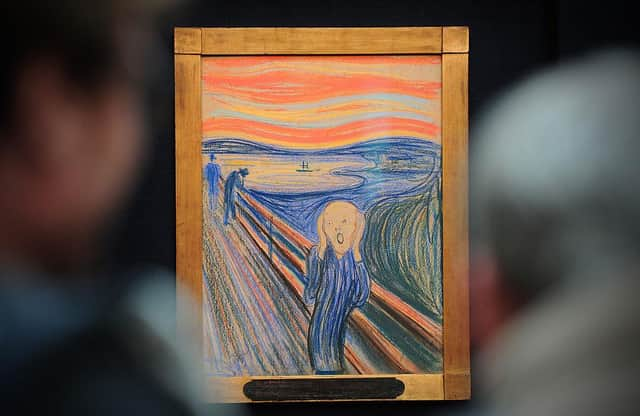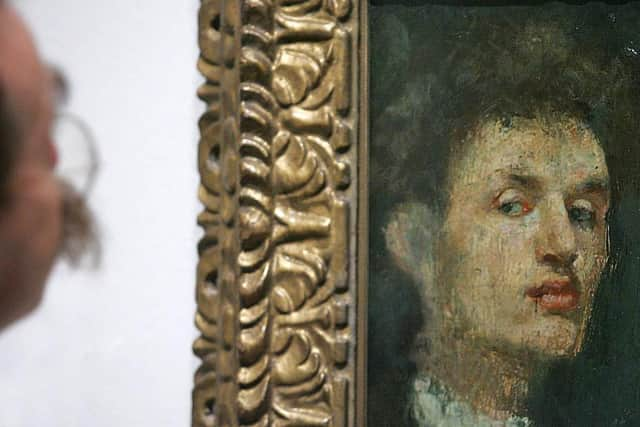Edvard Munch’s The Scream: what did artist write on his most famous painting, why did he do it – and who was he?


A perplexing piece of writing on one of the most famous paintings in the world - once thought to be the graffiti of an enraged critic – has been proven to be that of the artist, Edvard Munch.
The Scream is Munch’s most famous work, and has influenced popular culture in surprising ways – it even inspired an emoji.
Advertisement
Hide AdAlthough the troubled Norwegian artist created his most famous painting over a century ago, the head in hands, open-mouthed, silent wail of despair is the perfect pictorial representation of these turbulent times.


And now it's been proven that an inscription at the artwork’s edge is that of Munch himself.
Here is everything you need to know.
What does the writing say?
In the top left-hand corner of the painting, barely noticeable to the average viewer, the words "Can only have been painted by a madman", are written in pencil.
For years, that sentence has been the subject of much debate and discussion in the art world.
Was the message ‘supposed’ to be there? Who wrote it? And why?
Originally, it was thought that the words were nothing more than graffiti from a spectator outraged at the painting’s radical design, but now infrared scans have revealed the words were scribbled by Munch himself.
Advertisement
Hide AdThe National Museum of Norway conducted tests on the piece as it underwent conservation ahead of its instalment in the new museum due to open in Oslo next year.
Why did Munch write it?
It is thought Munch – who was known to have suffered mental health issues throughout his life – wrote the words in response to criticism of the painting, a radical-looking artwork in the late 1800s when it was first showcased.
Advertisement
Hide AdThe image fuelled speculation around Munch’s mental health, a topic much less sensitively discussed 125 years ago.
"The writing is without a doubt Munch's own," said museum curator Mai Britt Guleng. "The handwriting itself, as well as events that happened in 1895, when Munch showed the painting in Norway for the first time, all point in the same direction."
According to Munch’s diaries of the time, the artist was deeply affected by the negative public reaction to his work.
Who was Edvard Munch?
Edvard Munch – born in 1863 in Ådalsbruk, Norway – led a life plagued by illness, bereavement and the dread of inheriting a mental condition that ran in the family.
His mother and older sister died before Munch turned 14, his father died 12 years later and another sister was later admitted to an asylum with bipolar disorder.
Munch lived a bohemian life, and his distinctive painting style was influenced by nihilist Hans Jæger, who encouraged him to indulge in ‘soul painting’ – transferring his emotional and psychological state to the canvas.
Advertisement
Hide Ad"For as long as I can remember I have suffered from a deep feeling of anxiety which I have tried to express in my art," Munch wrote in his diaries.
"Without this anxiety and illness I would have been like a ship without a rudder."
Advertisement
Hide AdThe Scream was conceived in Oslo when Munch was walking at sunset and “heard the enormous, infinite scream of nature'. Four versions of the image were created between 1893 and 1910 – two painted versions and two in pastels.
It is one of the pastel images that has gone on to become one of the most famous artworks in the world, selling for $119.9 million (£85.5 million) in May 2012, the fourth highest nominal price paid for a painting at auction.
The work will be displayed with a number of Munch's other works, including Madonna, The Dance of Life and Self-Portrait with Cigarette, in The National Museum of Norway from 2022.